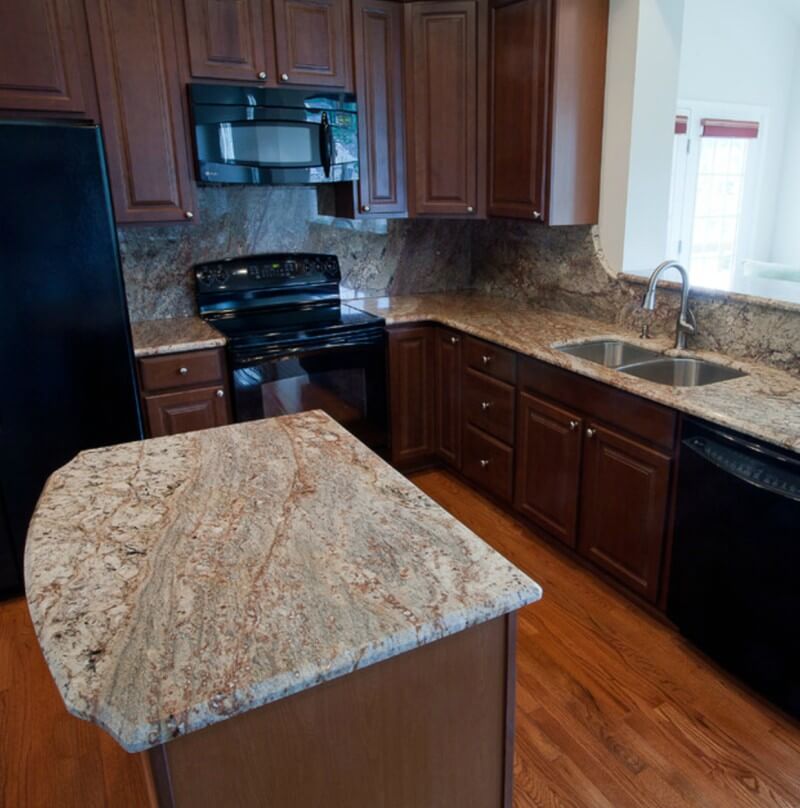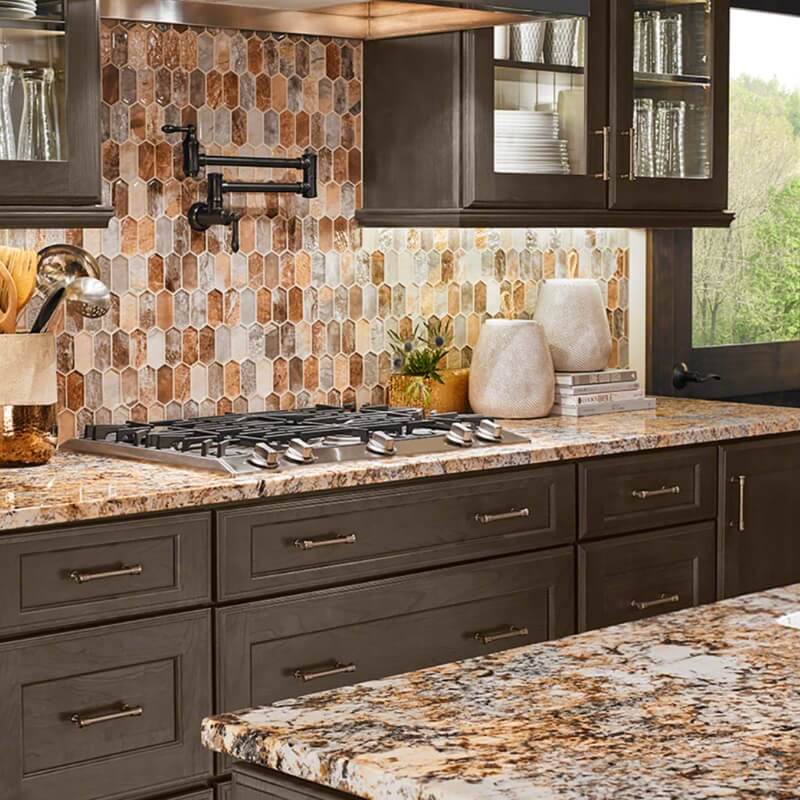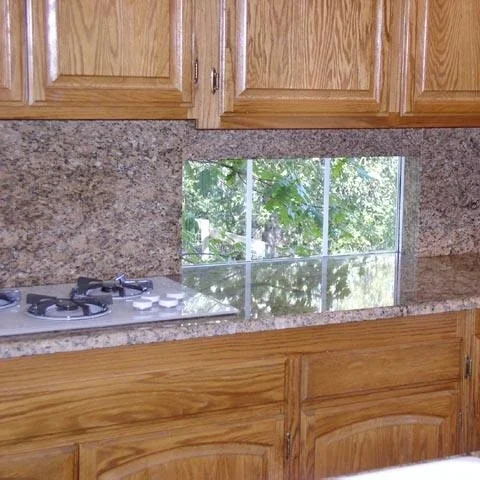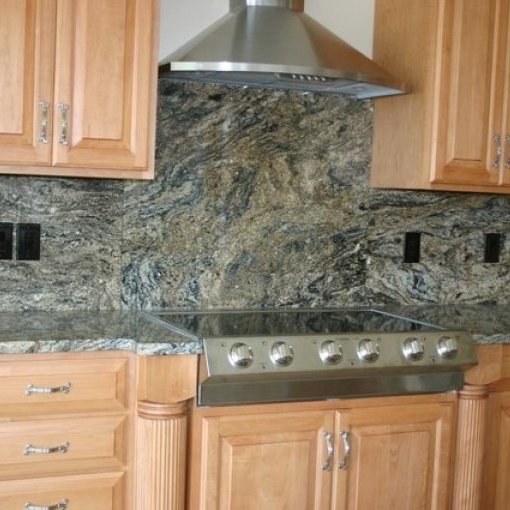Matching the backsplash to granite countertops is a crucial aspect of kitchen design that can enhance the overall aesthetic and cohesion of the space. When choosing a backsplash that complements granite countertops, it’s essential to consider factors such as color, pattern, texture, and style. Here’s everything you need to know about matching backsplash to granite countertops:
Color Coordination: One of the key considerations when selecting a backsplash for granite countertops is color coordination. Choose a backsplash color that complements the dominant colors in the granite, whether it’s the base color, veining, or specks of color. Opt for a complementary color that enhances the beauty of the granite without overpowering it.
Contrast: While coordinating colors is essential, adding contrast between the backsplash and granite countertops can create visual interest and depth in the kitchen. Consider choosing a backsplash color that contrasts with the granite to highlight its unique patterns and textures. For example, pairing dark granite countertops with a light-colored backsplash can create a striking contrast that adds drama to the space.
Material Compatibility: Select a backsplash material that complements the texture and finish of the granite countertops. For example, if you have polished granite countertops, consider a backsplash with a similar glossy finish to create a cohesive look. Alternatively, opt for a backsplash with a matte or textured finish for balance if your granite has a honed or leathered finish.
Pattern Play: When it comes to patterns, consider the scale and complexity of both the granite countertops and the backsplash. If your granite features intricate patterns or busy veining, opt for a simple, understated backsplash to avoid overwhelming the space. Conversely, if your granite is relatively plain, you can experiment with bolder patterns and designs in the backsplash.

Material Options: Backsplash materials range from ceramic and porcelain tiles to glass, stone, and even metal. Each material offers its own unique look and feel, so it’s essential to choose one that complements the style of your kitchen and the character of the granite countertops. Consider factors like durability, maintenance, and cost when selecting the right material for your backsplash.
Continuity: Create a sense of continuity and flow between the backsplash and granite countertops by selecting materials that share similar characteristics or hues. For example, if your granite countertops feature hints of blue, consider incorporating blue-toned tiles or glass mosaic tiles into the backsplash to tie the design elements together.
Style Considerations: The style of your kitchen, whether it’s traditional, transitional, or contemporary, should also influence your choice of backsplash. Consider classic subway tiles or natural stone for a traditional kitchen for the backsplash. For a modern or contemporary kitchen, opt for sleek, minimalist tiles or metallic finishes that complement the clean lines of the granite countertops.

Visual Balance: Achieve visual balance in the kitchen by ensuring that the backsplash and granite countertops are proportional to each other. Consider the height of the backsplash in relation to the countertops’ height and the kitchen space’s overall size. A well-proportioned backsplash can create harmony and cohesion in the kitchen design.
Lighting Effects: Take into account the lighting conditions in your kitchen when choosing a backsplash for granite countertops. Natural light can enhance the colors and textures of both the backsplash and countertops, while artificial lighting can highlight specific features or create ambiance. Consider installing under-cabinet lighting to illuminate the backsplash and showcase its beauty.
Personal Preference: Ultimately, the choice of backsplash for granite countertops should reflect your personal style and preferences. Whether you prefer a timeless and elegant look or a bold and modern statement, select a backsplash that resonates with your aesthetic sensibilities and enhances the overall design of your kitchen.

Common Mistakes to Avoid:
Ignoring the Granite: One common mistake is choosing a backsplash without considering the characteristics of the granite countertops. Failing to coordinate the colors, patterns, and textures of the backsplash with the granite can result in a disjointed or unbalanced look in the kitchen.
Overwhelming Patterns: Avoid selecting a backsplash with a busy or overpowering pattern that competes with the intricate patterns or veining in the granite. Opt for a more subtle or understated pattern to allow the beauty of the granite to take center stage.
Mismatched Styles: Another mistake is choosing a backsplash that clashes with the style of the kitchen or the character of the granite countertops. Ensure that the backsplash complements the overall design aesthetic, whether it’s traditional, transitional, or contemporary.
Poor Proportioning: Improper proportioning between the backsplash and granite countertops can throw off the balance of the kitchen design. Ensure that the height and scale of the backsplash are proportional to the size and layout of the countertops and the kitchen space.
Forgetting About Lighting: Don’t overlook the importance of lighting when selecting a backsplash for granite countertops. Consider how natural and artificial lighting will affect the appearance of both the backsplash and countertops, and choose materials and finishes that enhance the overall lighting effects in the kitchen.
Can I mix different materials for the backsplash and countertops?
Yes, mixing different materials for the backsplash and countertops can create visual interest and texture in the kitchen design. For example, you can pair granite countertops with a ceramic tile backsplash or a marble countertop with a glass mosaic backsplash.
Should the backsplash be lighter or darker than the granite countertops?
The choice of whether the backsplash should be lighter or darker than the granite countertops depends on personal preference and the overall design aesthetic. Lighter backsplashes can create a sense of openness and brightness, while darker backsplashes can add depth and contrast to the space.
How do I ensure a seamless transition between the backsplash and countertops?
To ensure a seamless transition between the backsplash and countertops, consider using the same material or color for both surfaces. Alternatively, choose materials or colors that complement each other and create a cohesive look in the kitchen.
What is the best way to clean and maintain a tile backsplash?
To clean and maintain a tile backsplash, use a mild soap and water solution or a gentle household cleaner. Avoid abrasive cleaners or scrubbers that can damage the tile surface. Regular cleaning and periodic sealing can help to keep the backsplash looking its best.
Can I install the backsplash myself, or should I hire a professional?
While DIY installation of a backsplash is possible, hiring a professional installer is recommended, especially if you’re working with natural stone or intricate tile patterns. Professional installers have the expertise and tools to ensure a seamless and durable installation that enhances the overall look of your kitchen.

Popular Granite Kitchen Countertop and Backsplash Pairings

How backsplash tile will make or break your kitchen u2014 Nicole Janes
Choosing the Best Backsplash to Go With Your Granite Countertops

How to Pick a Backsplash to Match Your Countertops

I like this a lot Outdoor kitchen countertops, Eclectic kitchen

Related articles:
- Granite Countertop Overlay
- Stains On Granite Countertops
- Black Pearl Granite Countertops
- Black Matte Granite Countertop
- Black Granite Kitchen Countertops
- Cutting Granite Countertops DIY
- Gray Granite Countertops
- Blue Gray Granite Countertops
- Granite Countertops Wood Island
- Backsplash Ideas For Granite Countertops

